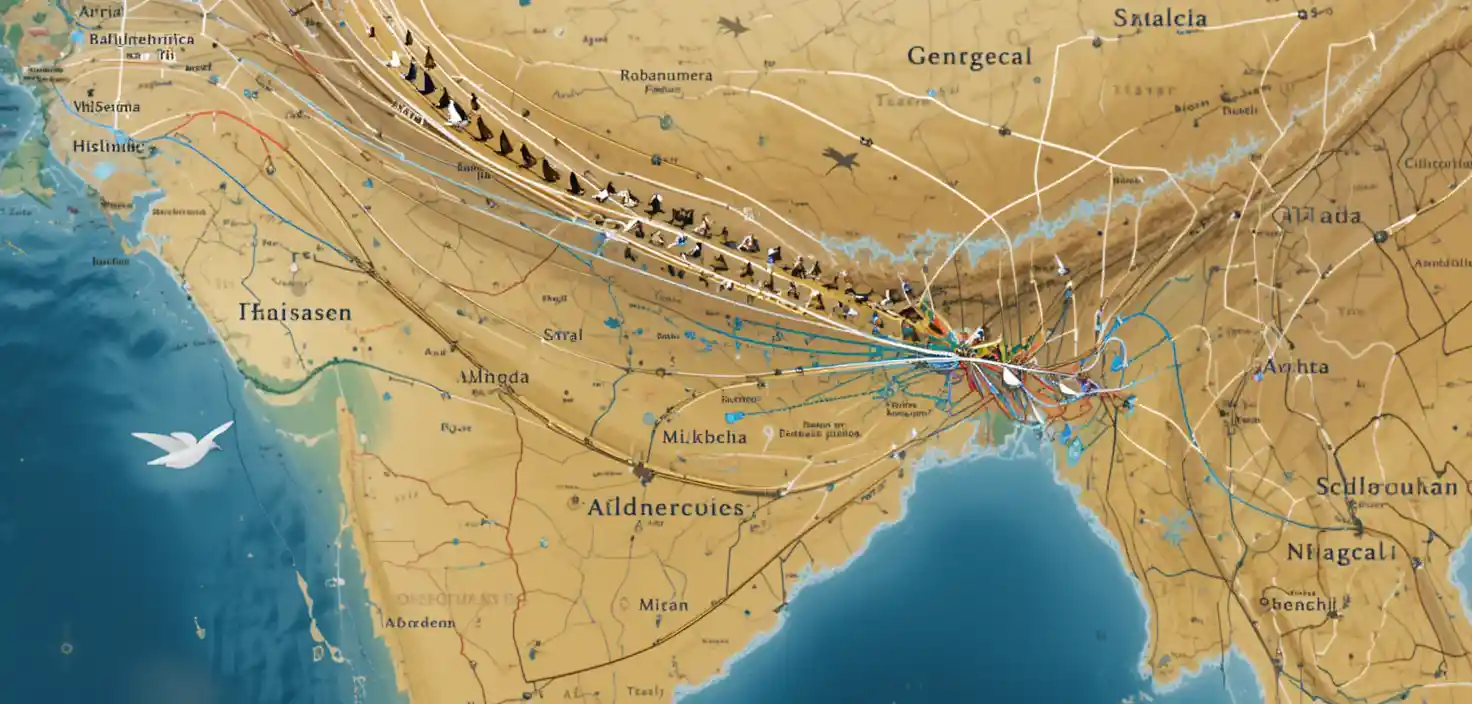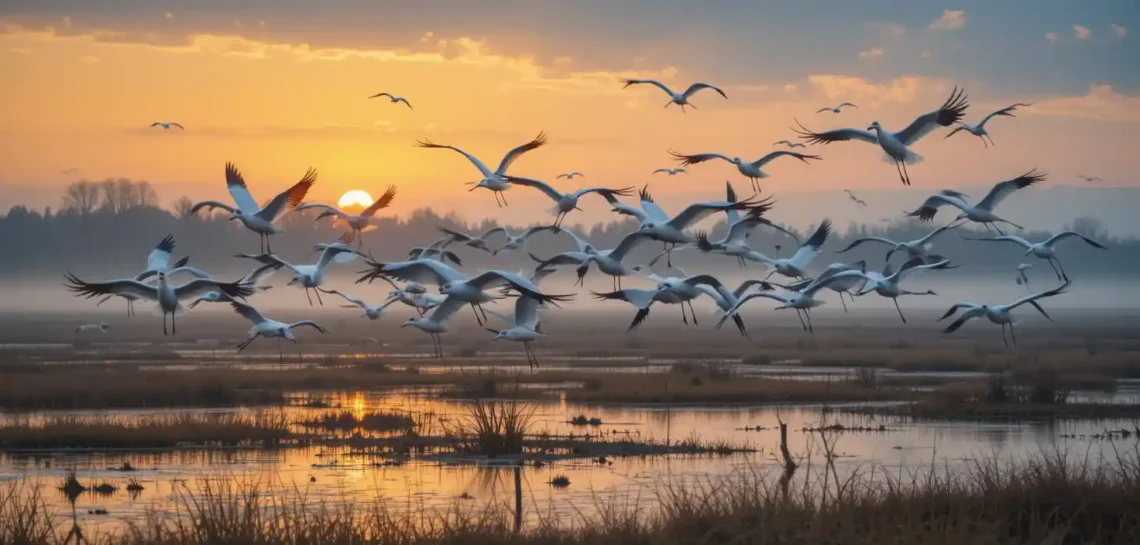Imagine waking up one day and embarking on a journey thousands of kilometers away, guided only by instinct. This is exactly what millions of birds do every year during migration. From tiny warblers to majestic storks, birds travel across vast landscapes, crossing mountains, deserts, and oceans. But why do they migrate? How do they navigate? And where can you find reliable information about their seasonal movements in a Migration of Birds PDF format? Let’s dive deep into this awe-inspiring natural phenomenon.
What is Bird Migration?
Bird migration is the seasonal movement of birds from one region to another, often between breeding and wintering grounds. This instinctive behavior is crucial for their survival, allowing them to access better food sources, escape harsh weather, and find suitable nesting sites.
Types of Bird Migration:
- Latitudinal Migration – Moving north to south or vice versa (e.g., Siberian Cranes traveling from Russia to India).
- Altitudinal Migration – Moving up and down mountainous regions (e.g., Himalayan Monals descending to lower altitudes in winter).
- Partial Migration – Some individuals of a species migrate while others remain resident (e.g., Indian Peafowl).
- Irruptive Migration – Unpredictable movement based on food availability (e.g., Owls moving due to rodent population changes).
Why Do Birds Migrate?
Birds migrate primarily for three reasons:

- Food Availability: Many birds leave colder regions in search of abundant food sources in warmer areas.
- Breeding Needs: Birds require specific habitats for nesting and raising their young.
- Climate Adaptation: To escape extreme temperatures that can impact survival.
Example: The Bar-headed Goose, one of the highest-flying birds, migrates from Central Asia to India, crossing the Himalayas at altitudes over 27,000 feet.
How Do Birds Navigate During Migration?
Despite traveling thousands of kilometers, birds rarely lose their way. They rely on multiple navigation methods:
- Sun and Star Compass: Birds use the position of the sun and stars for direction.
- Earth’s Magnetic Field: Some birds have an internal compass that detects magnetic fields.
- Landmarks and Smell: Recognizing mountains, rivers, and even scents helps guide their journey.
Example: The Pied Cuckoo, associated with the Indian monsoon, uses wind patterns and natural landmarks to navigate.
Notable Migratory Birds in India
India hosts numerous migratory birds during winter and summer. Some famous species include:
| Bird Name | Migration Route |
| Siberian Crane | Russia to Bharatpur (Rajasthan) |
| Flamingo | Rann of Kutch (Gujarat) from Iran & Africa |
| Bar-headed Goose | Tibet to various Indian wetlands |
| Amur Falcon | Siberia to Northeast India & Africa |
| Pied Avocet | Europe and Central Asia to India |
Threats to Migratory Birds
Despite their resilience, migratory birds face multiple challenges:
- Habitat Loss: Wetlands and forests are shrinking due to urbanization.
- Climate Change: Altered weather patterns disrupt migration timing.
- Hunting and Poaching: Some species are still hunted despite legal protections.
- Pollution: Plastic waste and chemical pollutants affect bird health.
Example: The Keoladeo National Park (Bharatpur), once a thriving hub for Siberian Cranes, has witnessed their drastic decline due to habitat loss.
Conservation Efforts in India
India has implemented several initiatives to protect migratory birds:
- Ramsar Sites: Designated wetlands under the Ramsar Convention.
- National Parks & Sanctuaries: Bharatpur, Chilika Lake, and Rann of Kutch serve as safe havens.
- Government Policies: The Wildlife Protection Act, 1972 safeguards endangered species.
- Citizen Science: Birdwatchers contribute to monitoring through platforms like eBird and Bird Count India.
Where to Find a Migration of Birds PDF?
For enthusiasts and researchers, PDFs on bird migration can be found at:

- Government Websites: Ministry of Environment & Forests
- Wildlife Organizations: Bombay Natural History Society (BNHS)
- Research Papers & Reports: Google Scholar
- Birding Websites: Bird Count India
Frequently Asked Questions
What is bird migration?
Bird migration is the seasonal movement of birds between breeding and non-breeding areas, often in response to changes in food availability and climate.
Why do birds migrate?
Birds migrate to find food, escape extreme weather, and access suitable breeding habitats.
How do birds navigate during migration?
They use the sun, stars, Earth’s magnetic field, and landmarks like mountains and rivers.
Which birds migrate to India during winter?
Birds like the Siberian Crane, Bar-headed Goose, and Amur Falcon migrate to India during winter.
What are the major threats to migratory birds?
Habitat loss, climate change, hunting, and pollution are key threats.
Which Indian sanctuaries are famous for migratory birds?
Keoladeo National Park, Chilika Lake, and Rann of Kutch are notable sanctuaries.
How far can birds travel during migration?
Some birds travel thousands of kilometers; for example, the Arctic Tern migrates over 70,000 km annually.
How can we help protect migratory birds?
Supporting conservation efforts, reducing pollution, and preserving wetlands are vital actions.
Where can I download a Migration of Birds PDF?
PDFs are available on government and wildlife organization websites like BNHS and MoEF.
What is the longest bird migration recorded?
The Arctic Tern holds the record for the longest migration, traveling from the Arctic to Antarctica and back.
Conclusion:
Bird migration is a spectacular natural event that showcases the resilience and adaptability of avian species. However, human activities pose significant risks to their survival. By supporting conservation efforts, protecting habitats, and spreading awareness, we can ensure that these incredible journeys continue for generations to come.
Call to Action: If you love birds, consider participating in local birdwatching events, supporting conservation projects, and educating others about the importance of migratory birds. Download a Migration of Birds PDF from the suggested sources and dive deeper into this fascinating topic!






